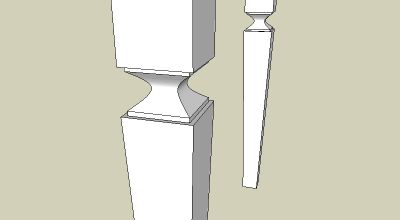Question
I am a furniture maker in Annapolis, MD and I have a commission to make an adjustable height, solid wood kitchen table. The table is to be about 4 ft x 4 ft square and a single pedestal support. The amount of travel desired is about 5-6 inches. Has anyone here done anything like this before? Any suggestions?
I have come across marine tables and helmsman chairs that use gas-lift cylinders and I wonder if something like that would be appropriate and possible to customize into a hardwood table like this. I can also envision something like a camera tripod with rack and pinion and crank handle. Lee valley has something like this but not sure if it looks stout enough. Also, with gas-lift cylinders, how long do these mechanisms last?
I have questioned why the client needs/wants the up/down feature, but the decision is pretty set on it. The client is at least exploring the feasibility.
Forum Responses
(Furniture Making Forum)
From contributor S:
My first thought is a 2" all thread in steel or brass - perhaps Acme threads - and they can just rotate/spin the top to the desired height. Then, I thought you could do wooden threads on a larger diameter - 4-5" - wood post with female threads at the lowest setting and near the bottom of the base post. Rotating would still be the adjustment.
The problem will come with stability on a single point attachment - camera tripod, etc. A 4' square table on a 2" or 5" post will be a little bouncy out at the edges. I don't know how to remove that, short of going to a 12" or larger post. Seems that Hafele or Mockett had something like this for the carpal tunnel avoidance strategy popular a few years back.
I spent some time learning about locking gas springs, like those used in hospital tables and office chairs, and I think they would work but the gas spring would probably have to be replaced after 5-10 years and that just doesn't seem acceptable. Any thoughts about trying to incorporate a rack and pinion set from someplace like Mcmaster-Carr into a telescoping pedestal? I could make the sleeves as wide and stout as I need and fit in the rack and pinion accordingly. Basically making a custom, beefier version of what Lee Valley offers. I just don't know the nuts and bolts of how to do this. Don't some drill presses use this mechanism for table height adjustment?
